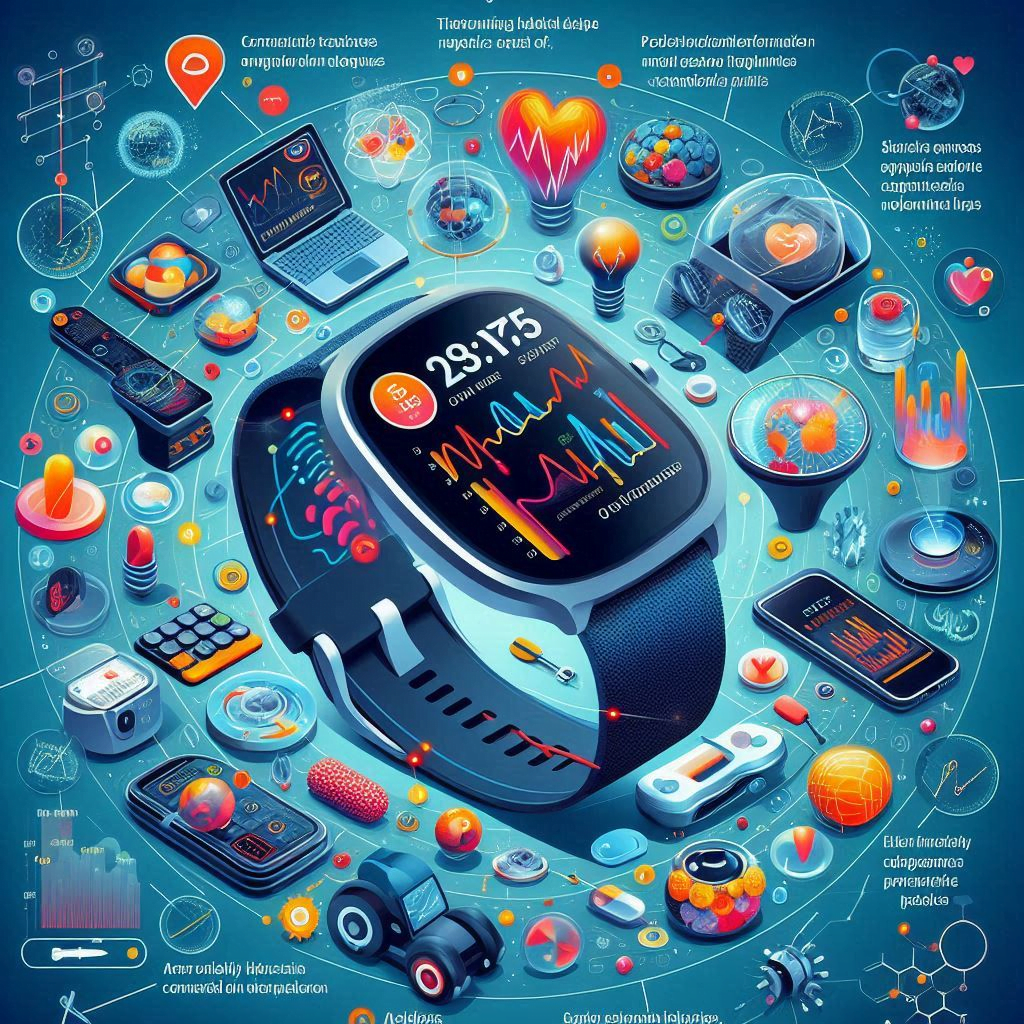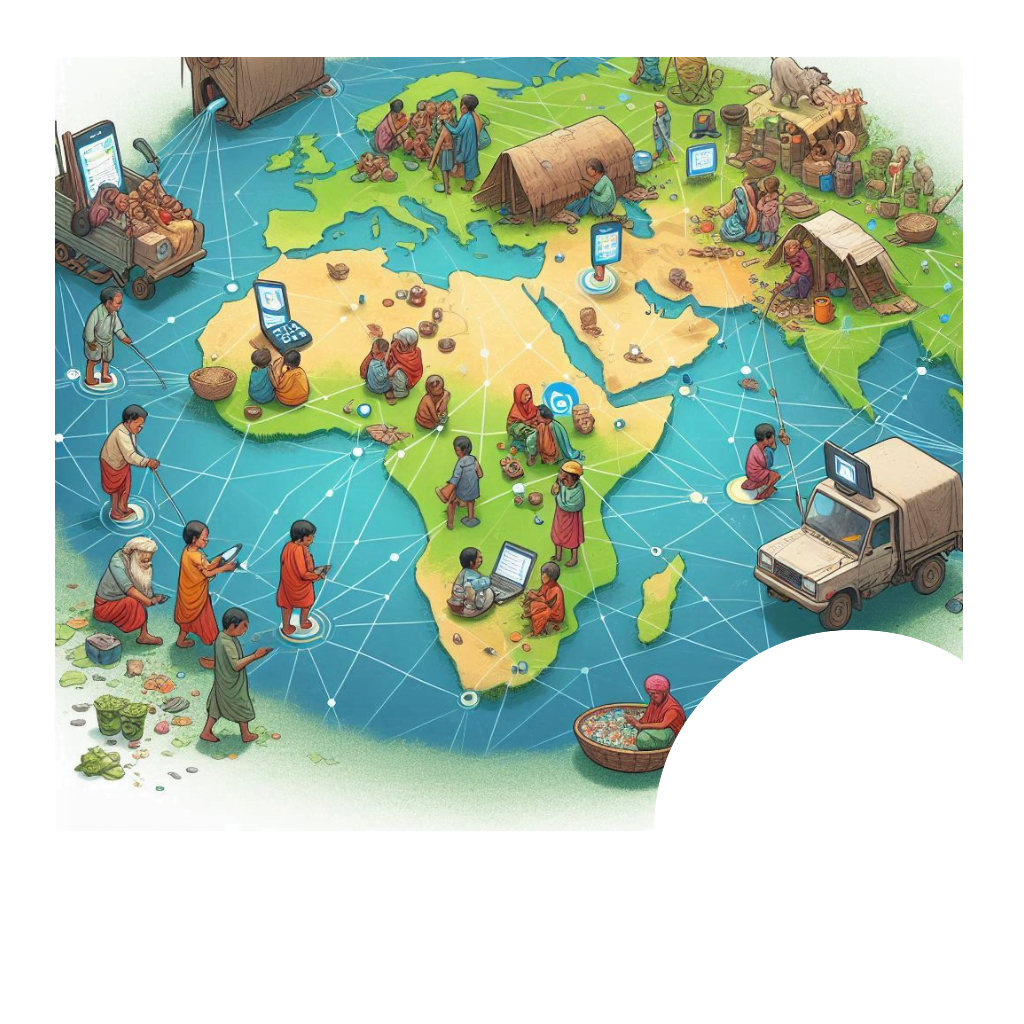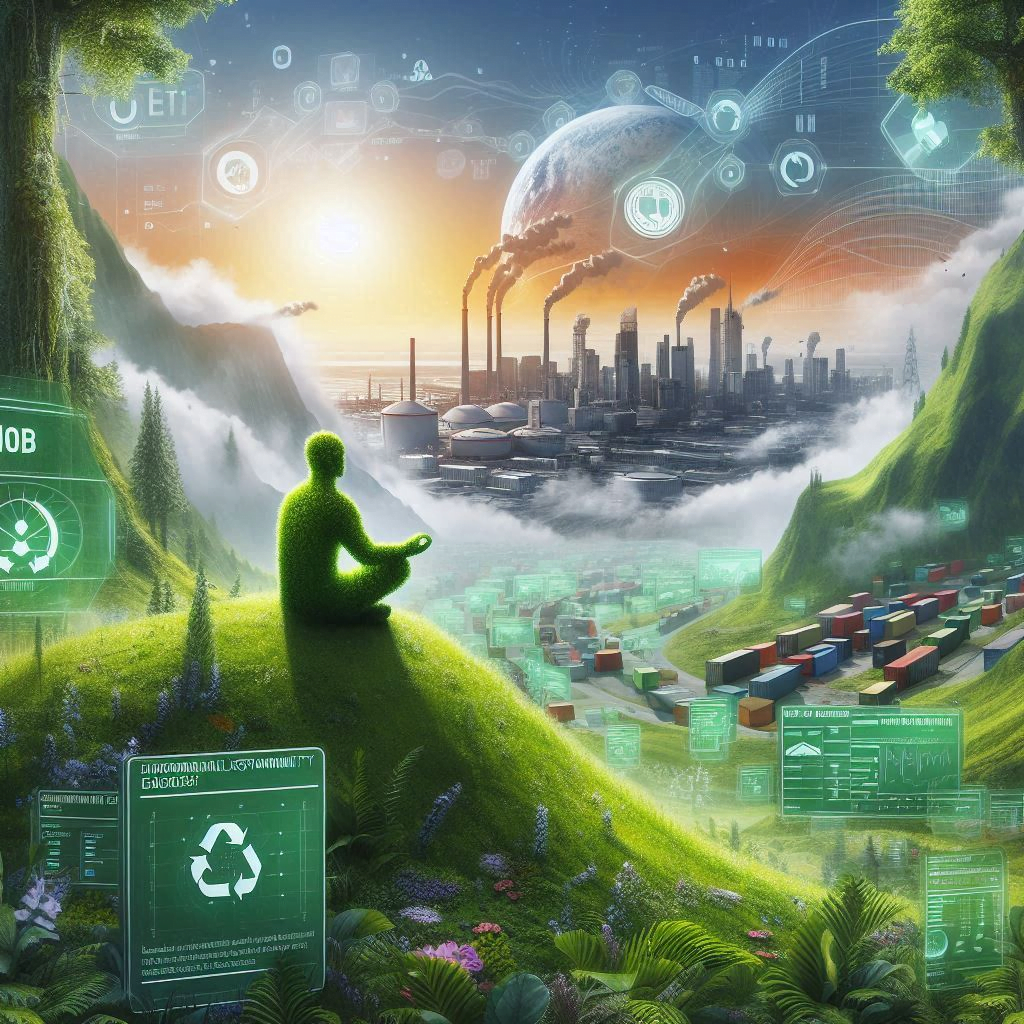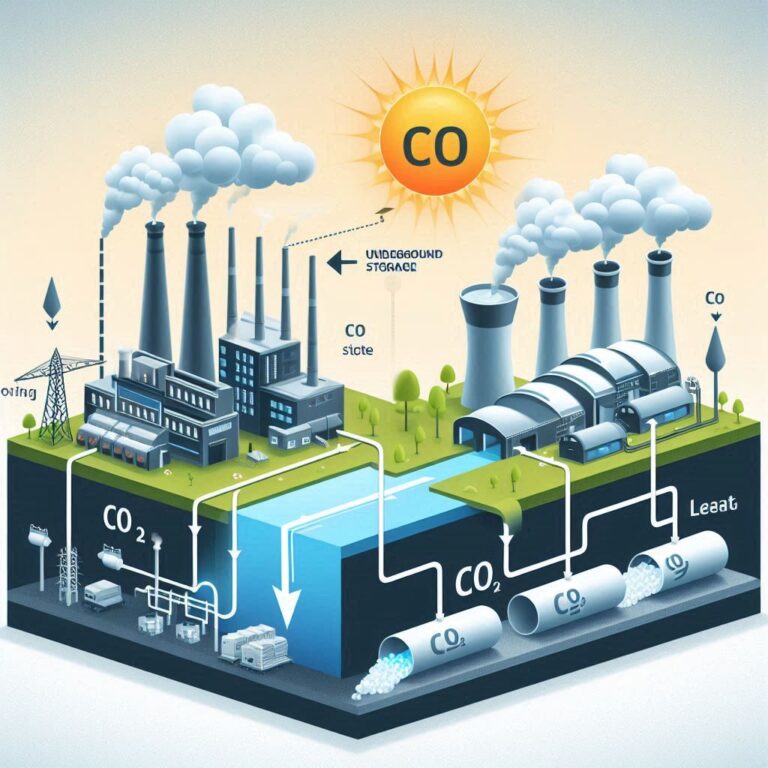Introduction:
Imagine a world where the data we generate through our daily lives isn’t just used for targeted advertising, but instead becomes a powerful tool for positive change. This is the exciting potential of the Internet of Behaviors (IoB). IoB goes beyond social media likes and shares, encompassing the vast amount of data collected from wearables, smartphones, and even connected appliances. While privacy concerns are valid, the question arises: can this data become a force for good, helping us tackle some of humanity’s most pressing social problems?
This blog post explores the transformative potential of IoB for good. We’ll delve into how seemingly mundane data points – like our smartphone GPS locations or energy consumption patterns – can be harnessed to address issues like poverty, limited healthcare access in remote areas, and environmental sustainability. By using real-world Internet of Behaviour examples and showcasing how organizations are already leveraging IoB for positive impact, we’ll shed light on the possibilities for a future where technology empowers communities and opens the new way for a more sustainable and equitable world.

The Power of IoB Data: Beyond Likes and Shares
The concept of the Internet of Behaviors (IoB) extends far beyond the curated world of social media. While platforms like Facebook and Instagram capture a glimpse into our online preferences, IoB paints a much richer picture. It delves into the vast ocean of data generated by our daily activities, collected through a diverse range of sources:
- Wearables: Fitness trackers, smartwatches, and other wearables continuously collect data on our activity levels, sleep patterns, heart rate, and even blood oxygen levels. This data, when analyzed in aggregate, can reveal insights into population health trends, identify potential health risks before they become major issues, and even inform the development of personalized healthcare solutions.
- Sensors: From smart meters in our homes to environmental sensors deployed in cities, the world is becoming increasingly instrumented. These sensors collect real-time data on energy consumption, traffic patterns, air quality, and even noise pollution. By analyzing this data, we can identify areas with inefficient energy usage, optimize traffic flow within cities, and monitor environmental changes to take proactive measures against pollution.
- Online Platforms: Our online interactions extend beyond social media. Data collected through search engine queries, online shopping habits, and even navigation apps can reveal valuable insights into people’s needs, preferences, and resource allocation. Imagine using anonymized location data to identify areas with limited access to basic necessities like grocery stores or healthcare facilities.

The true power of IoB data lies in its granularity and comprehensiveness. Unlike a single social media post, the data collected through IoB paints a holistic picture of our behavior and the environment around us. By analyzing vast amounts of data through powerful algorithms, researchers and organizations can identify:
- Trends: Are people in a particular region becoming less active? Is energy consumption rising due to inefficient appliances? IoB data can reveal these trends over time, allowing for proactive interventions.
- Patterns: By analyzing location data and purchasing habits, IoB can identify underserved communities lacking access to essential resources. These patterns can inform targeted development projects and resource allocation strategies.
- Areas of Need: IoB data can highlight areas with specific challenges, like high pollution levels or limited healthcare access. By pinpointing these areas of need, resources can be allocated more effectively to address them.
Using IoB to Tackle Social Issues: Shining a Light on Poverty
One of the most powerful applications of IoB lies in its ability to combat poverty and ensure more equitable resource distribution. Traditional methods of identifying poverty-stricken areas often rely on limited surveys and estimations. However, IoB data offers a more nuanced and data-driven approach:
Mapping Poverty Through Mobile Phone Usage: Mobile phone penetration is high even in low-income regions. Researchers can identify areas with limited connectivity or low phone ownership by analyzing anonymized mobile phone usage data, such as call patterns and internet access location. This data can be used to create poverty maps, pinpointing regions with potentially lower living standards and limited access to resources.
Internet Access Patterns Reveal Inequalities: Similar to mobile phone usage, internet access patterns can also provide valuable insights. Areas with limited or no internet access often coincide with regions facing economic hardship. Organizations can identify communities lacking basic infrastructure and resources by analyzing internet access data, allowing for targeted development initiatives.
Data-Driven Resource Allocation: Traditionally, resource allocation for poverty alleviation has relied on estimations and broad regional data. IoB data allows for a more precise approach. By analyzing poverty maps created from mobile phone usage and internet access patterns, NGOs and governments can pinpoint areas that most critically need resources. This data-driven approach ensures that development initiatives and funding are targeted effectively, maximizing their impact on poverty alleviation.
Real-World Internet of Behaviour Examples:
An excellent Internet of Behaviour examples for poverty alleviation comes from the World Food Programme (WFP). The WFP partnered with a mobile money operator to analyze anonymized mobile phone data to map poverty and food insecurity in rural Kenya. This data helped identify areas with limited access to food markets and essential services. Using this information, the WFP targeted its food distribution programs more effectively, reaching those most in need.
The potential of IoB extends beyond mapping poverty.
By analyzing user behavior patterns, IoB data can also shed light on:
Vulnerability to Exploitation: IoB data can reveal areas with a higher prevalence of cash-for-work programs. This information can help identify communities at heightened risk of exploitation due to limited employment opportunities.
Financial Inclusion: Mobile phone usage data can be used to understand financial service usage patterns in low-income areas. This data can inform the development of mobile banking solutions and financial literacy programs, promoting financial inclusion and empowering local communities.

By harnessing the power of IoB data, NGOs, governments, and development agencies can move from broad estimates to targeted interventions, ensuring that resources reach those who need them most, opening the new way for a more prosperous future.
Healthcare Access in Remote Areas: IoB Bridging the Gap
For millions living in remote areas, access to quality healthcare remains a distant dream. Geographic isolation, lack of infrastructure, and a shortage of qualified medical personnel pose significant challenges. Here’s how IoB can revolutionize healthcare access in these underserved regions:
Challenges of Remote Healthcare:
Limited Infrastructure: Remote areas often lack basic infrastructure like hospitals and clinics, making it difficult for residents to receive timely medical attention, especially for emergencies or chronic conditions.
Shortage of Medical Personnel: Qualified healthcare professionals are often reluctant to relocate to remote areas, leaving communities with limited access to specialized care.
Difficulties in Early Detection: The distance and logistical hurdles can make it challenging for residents to attend regular checkups, hindering early disease detection and preventive care.
IoB: Empowering Remote Healthcare
IoB data collected through wearables can be a game-changer for remote healthcare:
Remote Patient Monitoring: Wearables track vital signs like heart rate, blood pressure, and sleep patterns. This data can be transmitted remotely to healthcare providers, allowing them to monitor patients’ health in real time, even from miles away.
Early Disease Detection: By analyzing trends and fluctuations in vital signs, IoB data can potentially identify early signs of chronic conditions like diabetes or heart disease. This enables early intervention and treatment, improving long-term health outcomes.
Identifying Areas with High Healthcare Needs: Aggregated IoB data can reveal patterns in health metrics across remote regions. This helps identify areas with a higher prevalence of specific health issues, allowing for targeted resource allocation and deployment of mobile clinics or medical specialists.

AI and Telehealth: Revolutionizing Care Delivery
IoB data, combined with Artificial Intelligence (AI), holds immense promise for remote healthcare:
AI-powered Diagnostics: AI algorithms can analyze IoB data from wearables, identifying potential health risks and offering preliminary diagnoses. This can be crucial for remote areas with limited access to doctors and specialists.
Telehealth Consultations: IoB data can be used to facilitate remote consultations between patients in remote areas and healthcare professionals stationed in urban centers. This allows patients to receive expert advice and even prescriptions without needing to travel long distances.
Real-Life Examples of IoB in Action:
AliveCor (US): This company offers a smartphone-connected ECG device that allows users to record their heart rhythm and share it with a doctor remotely. This can be crucial for early detection of heart conditions in remote areas with limited access to cardiologists.
Scanadu Scout (Global): This pocket-sized medical scanner connects to a smartphone app and allows users to take basic health measurements like blood pressure, oxygen saturation, and temperature. The data can be shared with doctors remotely for preliminary diagnosis and follow-up recommendations.
Efforts and Initiatives:
- The World Health Organization (WHO) has recognized the potential of IoB for improving healthcare access in remote areas. They are working with various stakeholders to develop and implement IoB-based solutions for telehealth and remote patient monitoring in developing countries.
- Several non-profit organizations are focusing on utilizing IoB for remote healthcare initiatives. For example, Fondation Vodafone is working with partners to implement IoB solutions in underserved communities globally.
By leveraging IoB data, AI, and telehealth, we can bridge the gap in healthcare access for remote communities. IoB empowers remote patient monitoring, early disease detection, and targeted resource allocation, paving the way for a future where distance is no longer a barrier to quality healthcare.
Environmental Sustainability: IoB Data as a Green Guardian
Our planet faces a multitude of environmental challenges, from rising energy consumption to deteriorating air and water quality. The vast amount of data collected through IoB offers a powerful tool in the fight for environmental sustainability. Here’s how IoB can help us navigate towards a greener future:

Tracking Energy Consumption with Smart Meters:
Traditional energy meters provide limited data on energy usage. However, smart meters, now common in many homes and buildings, collect detailed real-time data on electricity and gas consumption. This data, when analyzed through IoB, reveals valuable insights:
Individual Consumption Patterns: By analyzing smart meter data, homeowners and businesses can gain a granular understanding of their energy usage patterns. This empowers them to identify areas for improvement, like reducing peak hour consumption or switching to energy-efficient appliances.
Real-Life Example: OhmConnect – Rewarding Smart Consumption
OhmConnect, a California-based company, utilizes IoB data from smart meters to incentivize energy conservation. They offer users rewards for reducing their energy consumption during peak demand periods. This data-driven approach fosters smart energy usage and reduces strain on the power grid.
Beyond Homes: Smart Cities and Sustainable Practices
IoB extends beyond individual homes, encompassing a network of connected devices in smart cities. Streetlights equipped with sensors can automatically adjust brightness based on real-time traffic and weather conditions, optimizing energy usage. Additionally, data from traffic sensors can help optimize traffic flow, reducing congestion and associated carbon emissions.
IoB for Environmental Monitoring: Beyond Energy
The potential of IoB data extends beyond energy consumption. Here are some captivating ways IoB can be harnessed for environmental monitoring:
- Air Quality Monitoring: Sensors deployed throughout cities can continuously monitor air quality levels, providing real-time data on pollutants like PM2.5 and ozone. This data can be used to identify areas with high pollution levels and trigger targeted interventions, like traffic restrictions or alerts for vulnerable populations.
Real-Life Example: Canary – Personal Air Quality Monitoring
Canary, a popular smart home device, goes beyond security by offering air quality monitoring capabilities. It provides users with real-time data on pollutants like dust and volatile organic compounds (VOCs) within their homes. This empowers individuals to take action to improve their indoor air quality.
- Water Quality Monitoring: Sensors deployed in rivers and lakes can continuously monitor water quality parameters like pH levels, nitrate concentration, and the presence of harmful bacteria. This data can be used to identify potential contamination sources and take preventive measures to safeguard water resources.
The Future of IoB for a Sustainable World
IoB data, combined with advanced analytics and AI, holds immense potential for environmental protection. Imagine a future where:
- Smart grids dynamically adjust energy production and distribution based on real-time demand data, minimizing reliance on fossil fuels.
- Predictive maintenance of infrastructure like pipelines can be achieved by analyzing IoB data for early signs of wear and tear, preventing environmental disasters like oil spills.
- Forest fires can be detected and contained faster through real-time data from environmental sensors placed strategically in remote areas.
Challenges and Considerations: Navigating the Ethical Landscape of IoB for Good
While the potential of IoB for good is undeniable, its path is not without obstacles. As we harness this powerful tool to tackle social issues, it’s crucial to acknowledge and address the following challenges:
Data Privacy Concerns:
IoB data is inherently personal. It can reveal intimate details about our health, habits, and even location. The potential for misuse of this data raises significant privacy concerns. Here’s a real-life example:
- Fitness Tracker Data Leak: In 2018, a popular fitness tracker company experienced a data breach, exposing the location and activity data of millions of users. This incident highlights the importance of robust data security measures and user control over their information.

Ethical Considerations of Data Usage:
The way IoB data is collected, analyzed, and used deserves careful ethical consideration. Biases in algorithms or unfair targeting practices can exacerbate existing social inequalities. For instance:
- Algorithmic Bias in Loan Applications: An algorithm used to assess loan applications might inadvertently discriminate against certain demographics based on their spending patterns collected through IoB data. This underlines the need for transparent algorithms and responsible data governance practices.
Data Ownership and User Consent:
Who owns the data collected through IoB? Currently, regulations are often ambiguous. Clear data ownership regulations and a strong emphasis on user consent are crucial for ensuring the ethical use of IoB data for good.
- The MyData movement: This global movement advocates for individuals to have control over their data. Initiatives like this can empower users and foster trust in IoB for good initiatives.
Collaboration is Key:
To ensure the responsible and ethical use of IoB data for social good, collaboration between various stakeholders is essential:
- Tech Companies: Tech giants developing IoB solutions need to prioritize data security, transparency, and user consent in their practices.
- Governments: Governments have a role to play in establishing clear data ownership regulations and enforcing responsible data usage practices.
- NGOs: NGOs can leverage their expertise to develop ethical frameworks for using IoB data to address specific social issues.
- Citizens: Citizens can actively engage in discussions surrounding IoB and advocate for responsible data practices.
By working together, we can navigate these challenges and unlock the immense potential of IoB to solve some of humanity’s most pressing problems.
Remember: IoB for good is not just about technology; it’s about harnessing the power of data responsibly and ethically to create a more equitable and sustainable world for all.
The Future of IoB for Good: A Collaborative Journey Towards Positive Change
The story of IoB for good is far from over. As technology evolves, so too will its potential to tackle social issues in innovative and impactful ways. Here’s a glimpse into the exciting future that lies ahead:
Emerging Trends and Their Impact:
- AI-powered Data Analysis: Imagine AI algorithms that can analyze vast amounts of IoB data from various sources, identifying previously unseen patterns and trends. This can enable hyper-targeted interventions for social issues, pinpointing at-risk populations or areas in need of specific resources with greater precision.
- Decentralized Data Ownership: Blockchain technology offers the potential for decentralized data ownership models. This could empower individuals to control their data, choosing how it’s used and potentially benefiting from its usage through secure data marketplaces. This shift in ownership could incentivize responsible data collection and utilization for social good initiatives.
- Citizen Science with IoB: The future of IoB may see increased citizen participation. Imagine individuals using wearables or connected devices to collect environmental data in their communities, contributing to real-time monitoring of air quality or water pollution. This bottom-up approach can empower individuals and foster a sense of collective responsibility for the environment.

Beyond Technology: Empowering Communities
IoB for good is more than just cutting-edge technology. It’s about empowering communities to actively participate in shaping a better future. Here’s how:
- Capacity Building: Empowering local communities to collect, analyze, and interpret IoB data relevant to their specific challenges is crucial. This can lead to locally-driven solutions and a greater sense of ownership over social change efforts.
- Data Literacy: As IoB continues to proliferate, equipping communities with data literacy skills becomes critical. Individuals need to understand how their data is used, how to protect their privacy, and how to leverage data for their benefit and the betterment of their communities.
- Open Data Platforms: Encouraging the creation of open data platforms will foster collaboration and innovation. Sharing anonymized IoB data can enable researchers, NGOs, and social entrepreneurs to develop novel solutions to complex challenges.
The future of IoB for good is a collaborative journey. By working together – tech companies, governments, NGOs, and citizens alike – we can harness the power of IoB data to create a more equitable, sustainable, and empowered world. This journey is not just about technological advancements; it’s about human ingenuity, collaboration, and a shared vision for a brighter future where data empowers, not exploits, and where technology serves as a tool for positive social change. Let’s embrace the possibilities of IoB for good and collectively write the next chapter in this exciting story.
Conclusion: Weaving a Brighter Future with IoB for Good
The vast tapestry of data woven by the Internet of Behaviors holds immense potential. It’s not just a collection of bits and bytes; it’s a treasure trove of insights waiting to be unlocked. By harnessing the power of IoB, we can embark on a collaborative journey to tackle some of humanity’s most pressing challenges.
Imagine a world where:
- Poverty is mapped with precision, enabling targeted resource allocation and empowering communities to break the cycle.
- Remote villages receive quality healthcare through remote patient monitoring and AI-powered diagnostics.
- Sustainable practices become the norm, guided by real-time data on energy consumption and environmental parameters.
This future is within reach, but it hinges on responsible data practices. We must prioritize ethical data collection, user consent, and robust data security measures. Collaboration is key – tech giants, governments, NGOs, and citizens all have a role to play.
This is not just a story for the tech elite; it’s a call to action for everyone. We invite you to:
- Share your thoughts: How can IoB be used to address social issues in your community?
- Educate yourself: Explore the resources listed below to learn more about IoB for good initiatives.
- Demand change: Advocate for responsible data practices and ethical use of IoB to create a positive impact.
Let’s harness the power of IoB not just to collect data, but to create a more equitable, sustainable, and empowered world for all.
Resources:
The World Bank – (Focuses on leveraging technology for social good)
The Data & Society Research Institute -(Explores the social implications of data)
MyData Global -(Advocates for individual control over personal data)
“Did you enjoy this post? I write about similar topics on [blog name]. Come explore more!”






